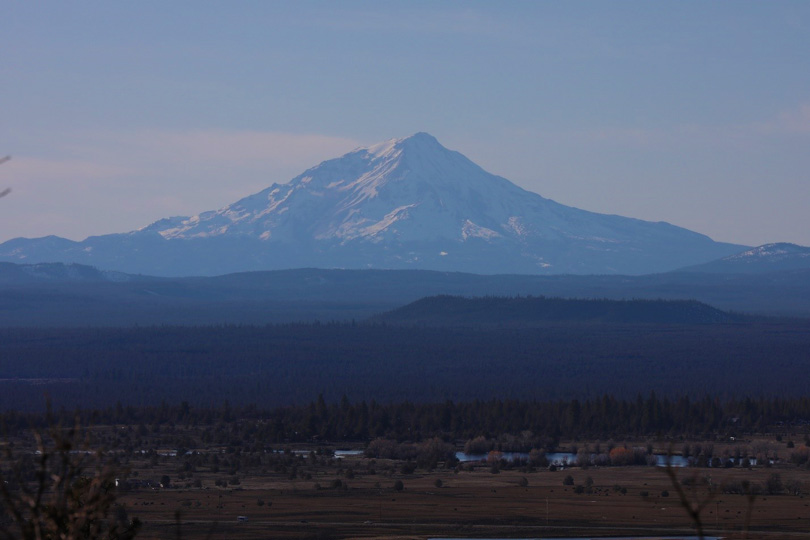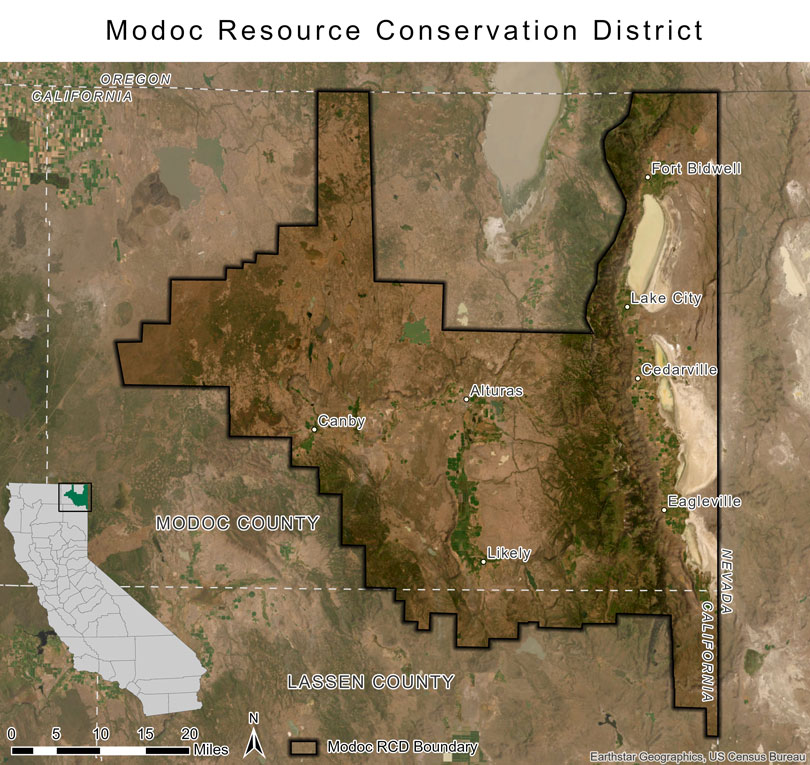
The efforts of one small-town resource conservation district in rural Modoc County are having a big impact on forest health and wildfire community protection in northeast California.
With strategic funding and support from the Sierra Nevada Conservancy and the Regional Forest and Fire Capacity Program (RFFCP), the Modoc Resource Conservation District (Modoc RCD) has grown from just a few part-time workers to a robust organization with full-time employees who are helping to get vital forest-health and wildfire-resilience projects planned and implemented throughout the area.
“During the financial downturn of 2008, when the state halted grants, I think the Modoc RCD was down to just two contractual employees and a bookkeeper. Their capacity to do projects was greatly reduced,” said Elissa Brown, Partnerships & Community Support Coordinator with the Sierra Nevada Conservancy (SNC), which handles the RFFCP in California’s Sierra-Cascade. “Once they got support years later and the ground under their feet, however, the scale of work they were doing just grew and grew. It was incredible!”
Modoc RCD benefits from RFFCP funding, support
Administered by the Department of Conservation, the RFFCP was established in 2019 to help support the development and implementation of regional plans and projects to improve forest health and fire resilience through recommendations of the Wildfire and Forest Resilience Action Plan. In California’s Sierra-Cascade, an area that accounts for roughly 80 percent of California’s developed water supply and 50 percent of its forest carbon, that support comes through guidance and grants from the SNC to eligible organizations, such as the Modoc RCD.
“Up until the time we received funding from the RFFCP, the Modoc RCD existed from one grant to another just to survive,” said Lorissa Soriano, project manager with the Modoc RCD. “Fast forward to today and thanks to the RFFCP, we have multiple projects in the works and have incorporated forest health and wildfire prevention to our list of priority projects. The Modoc RCD is quickly becoming more visible to the public and progressed into a more viable and stronger organization.”
The first RFFCP grant to the Modoc RCD came at the end of 2019. With the initial funds, it hired several full-time staff members, created a workforce development program to train at-risk youth to help with fuel-reduction projects, and put together a multi-agency task force to develop Modoc County’s Community Wildfire Protection Plan.

Revitalized Modoc RCD a hub for forestry and community protection planning
A second capacity grant in the fall of last year is continuing to keep the critical planning and implementation flowing. Currently, the Modoc RCD is collaborating with other agencies to continue forest-health and wildfire-resilience work, including the Bureau of Land Management, Bureau of Indian Affairs, U.S. Forest Service, U.S. Fish and Wildlife Service, Modoc National Refuge, California Deer Association, CAL FIRE, County of Modoc, Modoc Fire Safe Council, and the Pit River Tribe.
“We formed a Fuels Specialist Group comprised of fuels and fire-mitigation experts to assist us with gathering data and mapping that identify proposed hazardous fuels treatment areas within our boundary. The datasets are being used to perform large-scale analysis of moderate to high fire-risk areas, create maps to display and visualize priority areas for targeted hazardous-fuels treatments, and to coordinate our efforts across multiple jurisdictional boundaries,” Soriano added.
According to Brown, without organizations like the Modoc RCD, the efforts needed throughout the state of California to protect forests and communities from climate change and damaging wildfires would not be possible. It is their expertise and resolve that is getting the job done.
“We can’t make this vital work happen. It’s our partners that do,” emphasized Brown. “We may get grant funds, but we have to wait for viable project proposals to come in. If folks can’t do that or don’t have the ability to implement projects, we are stuck. That is where the RFFCP comes in. We can look into those areas, like grant writing, that may be burdens for organizations. We try to understand and strengthen needed capacity so our partners can be robust and plan and implement the necessary, significant projects. Just like the Modoc RCD is doing.”
